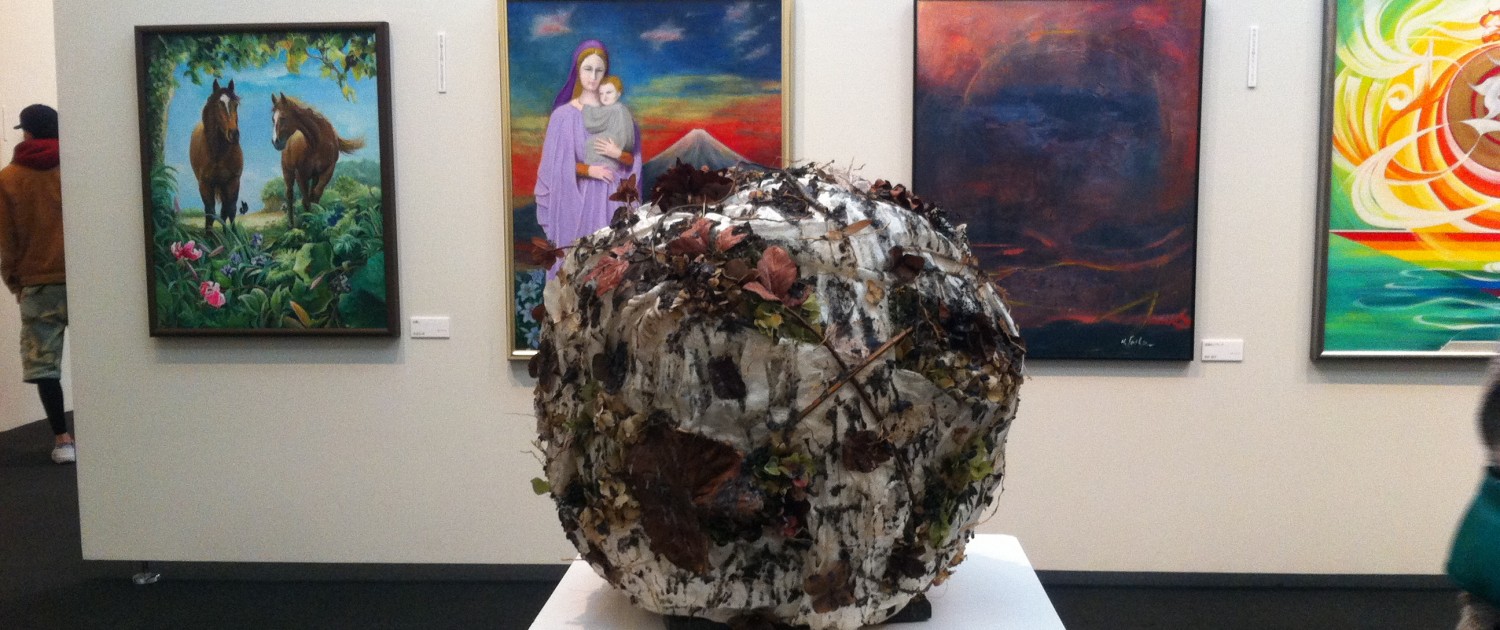Exhibition: The Art of Japan
On Tuesday, I sat on a bench in Ueno Park, sipping on a “Caramelly Sakura Latte” from Starbucks (delicious!) and watching dusk settle on the bare branches around me. I had spent the day at the Ueno no Mori Museum of Art, wandering the halls of 「日本の美術」 or “The Art of Japan.” The exhibition had also been a competition of sorts, and upon entering the gallery, I was handed a survey asking me to choose my favorite work and explain why. Suggested judging criteria, spanning from the technical skill and imagination of the artist to the rhythm and expression of the painting, were listed one after another. I made a face at the questions, which were completely in Japanese, and exchanged a wry smile with my friend.
“Well, let’s jump in,” I said.
Walking into an exhibition titled “The Art of Japan,” one might expect to see nothing more than traditional pieces — scrolls and ukiyoe prints hanging off white plaster walls, Chinese characters splashed out in black ink. There were indeed a few of those — watercolor pieces inspired by famous Japanese shrines and temples; colorful scenes from the classical Japanese novel, The Tale of Genji; and ikebana, or flower-arrangements, laid out on white blocks in the middle of the room.
But, of course, the world of Japan is far more vivid than that. Western-styled works also crowded the gallery, fingers interlaced with their more traditional counterparts. A crayon piece by 平松恵子 (most likely read as Hiramatsu Eiko), titled 「手の平の海」 (The Ocean in the Palm of a Hand) caught my eye. It was a portrait of a young, freckled boy cupping a small puddle of water in his hands, from which two whales, etched out in rainbow from the black crayon backdrop, were leaping into the air. Beside it, 「六花の勇者」(The Hero of Snow) by 宮城 (most likely read as Miyagi) depicted a young warrior leaning against a tree. The leather-clad body and black, futuristic rifle of the character, coupled with the manga-like style of the artist, made her look like a character out of a Japanese video game.
Most pieces, I realized, were actually a fusion of Western and Eastern styles. Ikebana arrangements featured miniature white picket fences side-by-side with its flowers; graceful geisha in kimono were done in oil, in homage to European portraiture. Finally, I came to a piece titled 「絆」 (Bonds) by MIEKO. It was a painting of the Virgin Mary, standing before white-capped peak which could only be identified as Mount Fuji. Looking at these two great icons of East and West, of nature and religion, of beauty and faith, I felt that it was for moments like these that I decided to study abroad.

